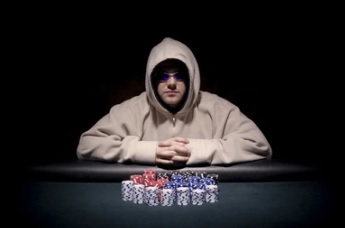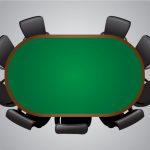Poker should not be thought of as a game that starts when the cards are dealt and ends with the showdown. At its core, poker is a game of competing strategies. This is why when we classify players, we classify them by their strategy and skill level. Here, we will classify players by their post-flop tendencies. The balance of actions "call, fold, raise" tells us a lot about a particular player. If we recall Renton’s ABCD theorem, we should play all of the hands in each subrange the same way. Players that are exploitable will shrink some of the ranges and expand the others.
The players of the first type don’t raise enough. These people pot control too much; they are too worried about being beat. That means they will call with hands from their A range, effectively moving them into their B range. They will not bluff with hands from their C and D ranges as often as they should because they’re worried about being called or they are too busy on other tables to think about bluffing. The key to exploiting these players is shrinking your C range by moving the bottom of it to D. For example, instead of check/calling marginal strength hands on the river, go ahead and check/fold. These nits are not bluffing you or making thin value bets, so you should expect them to check back hands of similar strength.
The players that don’t fold enough are profitable to play against. What they are really doing is adding hands from their D range into their C range. They will float with hands that have no equity or call without getting correct pot odds. The key to exploiting them is merging our C range with our D range. Instead of cbetting, we will check more flops. We will lean towards checking back our draws on the turn instead of semi-bluffing. They are not folding against our value range anyway so might as well not waste any money trying to bluff them.
A rare type of player also exists. This player does not call enough. He skipped the chapter on pot control and decided to put the top of his B range into his A range and the bottom into his C range. Since his raising range is so wide, we should fold less to his raises. That means we’ll be moving some hands from our C range into B. We’ll be calling him a lot more. We should also put hands from our D range into our C range and rebluff him. This is because he’ll be doing a lot of folding instead of calling.
Against players that raise too much we should move most of our range up. The top of our B range will be promoted to A because we’ll be happy about getting raised with a lot more hands. The top of our C range should also be promoted to B because we will be calling him a lot more.
The players that fold too much basically play their C range like it’s their D. We will do the opposite by playing our D range like it’s our C. That means we’re bluffing and they’re folding.
There are those that call too much. They expand their B range by playing some of their A hands passively. They also call with hands from their C or D range that should be folded or raised as a bluff. Loose-passive fish are a mix of the nit and the non-folder. So in playing against these opponents we should use both of the adjustments, folding to their raises more and trying to bluff them less.
Usually each particular player is a unique mix of some of these player types. By gauging how much of this applies to each individual opponent, we should create our ranges around that fact. With each hand, we should mentally adjust our preflop ranges and our stack off ranges against each individual opponent. Each time we get a fuller picture of exactly how our opponent thinks, we can make a mental adjustment of exactly how to plan out our ranges.
Submit your review | |









